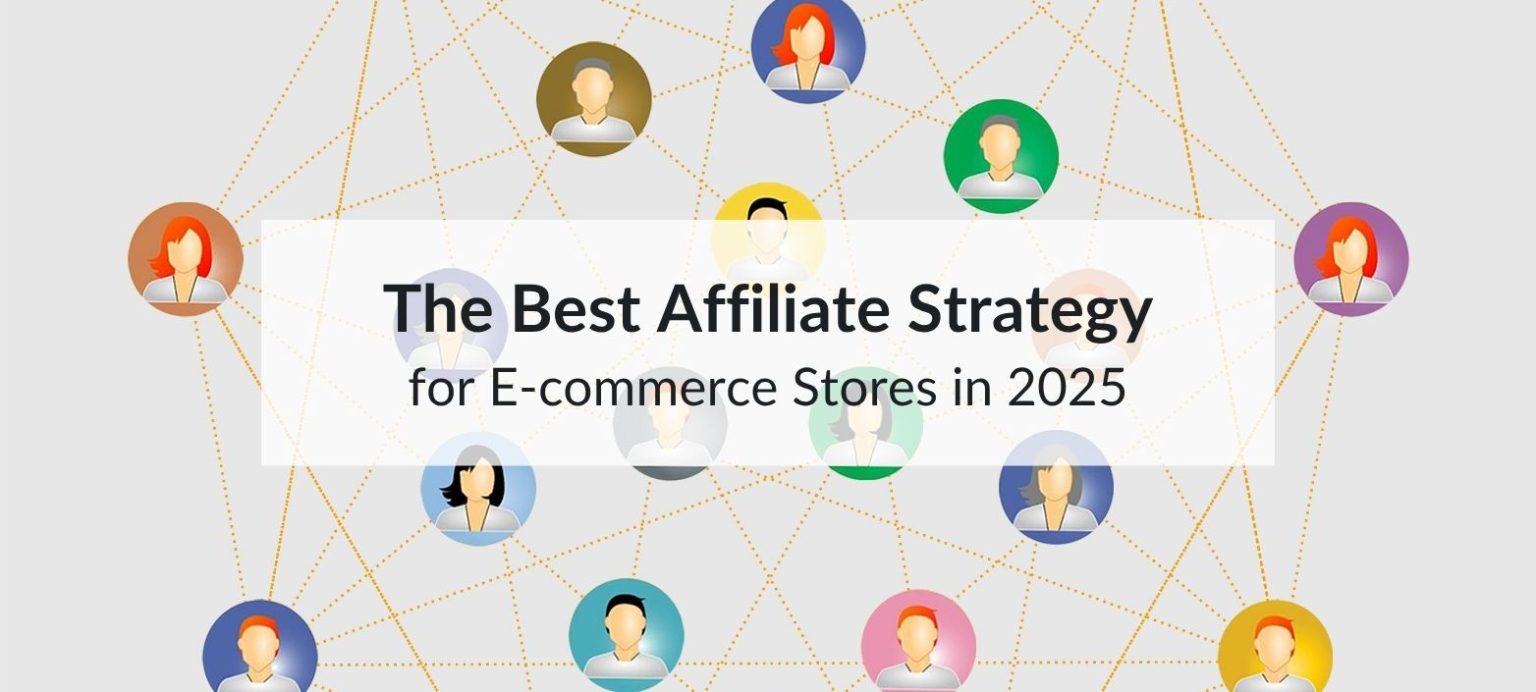Affiliate marketing continues to be one of the most cost-effective ways for e-commerce stores to grow. An effective affiliate strategy gives e-commerce stores a low-risk, high-reward way to grow. Instead of pouring budget into ads, you reward partners for real results—clicks, sales, and conversions.
What Is an Affiliate Strategy and How Does It Work in E-commerce?

An affiliate strategy is a performance-based marketing approach where businesses reward individuals (affiliates) for bringing in customers through their own marketing efforts. In e-commerce, this means partnering with bloggers, influencers, YouTubers, or content creators who promote your products using unique tracking links. Each time a customer makes a purchase through that link, the affiliate earns a commission.
Affiliate marketing is especially powerful for online stores because it allows you to tap into existing audiences without massive upfront costs. You only pay when results are delivered—making it one of the most cost-effective growth tools available.
Best Affiliate Strategies for E-commerce Stores in 2025
To succeed with affiliate marketing in 2025, you need a strategy that attracts the right partners and keeps them engaged. Below are the key affiliate strategies to implement this year.
1. Focus on Quality Over Quantity
Having hundreds of affiliates won’t mean much if they don’t drive sales. Instead, it’s smarter to focus on recruiting affiliates who:
- Understand your niche.
- Have an engaged, relevant audience.
- Produce high-quality content that aligns with your brand.
Look for bloggers, YouTubers, podcasters, and social media influencers who already create content related to your product categories.
2. Offer Competitive Commissions
Affiliates are motivated by earnings. Offering a competitive commission structure makes your program more appealing.
Commission Structure Tips
- Flat Rate: Fixed amount per sale, useful for products with consistent pricing.
- Percentage Based: A percentage of the sale value, better for stores with varied product pricing.
- Tiered Commissions: Reward top-performing affiliates with higher commissions after reaching certain sales thresholds.
Make sure your offer matches or beats similar brands in your industry.
3. Provide High-Converting Marketing Materials
Affiliates perform better when you equip them with the right tools.
Some essentials include:
- Banner ads in various sizes.
- Pre-written email templates.
- Social media graphics.
- Product demo videos.
- Sample blog posts or content guidelines.
Making it easy for affiliates to promote you encourages more frequent and effective promotion.
4. Simplify the Sign-Up and Tracking Process
Nobody wants to jump through hoops to join an affiliate program. Choose an affiliate platform that makes sign-up simple and tracking reliable.
Popular options include:
- Refersion
- ShareASale
- PartnerStack
- Rakuten Advertising
Your platform should offer clear dashboards, easy-to-use links, and real-time commission tracking.
5. Work With Micro-Influencers
Micro-influencers (with followers between 5,000 and 50,000) often have higher engagement rates than bigger names. They build stronger personal connections with their audiences, making their recommendations feel more genuine.
Partnering with several micro-influencers can lead to a steady flow of quality traffic and conversions.
6. Introduce Performance Bonuses
A little extra incentive can go a long way. Performance bonuses motivate affiliates to work harder.
Examples include:
- Cash bonuses for reaching a sales milestone.
- Gift cards for top performers each quarter.
- Exclusive products for your best affiliates.
Rewarding strong performance keeps your best affiliates loyal.
7. Build an Affiliate Community
Successful affiliate programs often treat their affiliates like valued partners, not just sources of traffic.
Ways to build a community:
- Create a private Facebook or Slack group.
- Host webinars and Q&A sessions.
- Send regular newsletters with tips and product updates.
Engaged affiliates are more likely to stay motivated and aligned with your brand’s growth.
8. Prioritize Transparency and Trust
Affiliates want to know exactly how they’re getting paid and when.
Be clear about:
- Commission percentages.
- Cookie durations.
- Payment schedules.
- Refund and return policy impacts on commissions.
Setting clear expectations avoids misunderstandings and builds long-term loyalty.
9. Use First-Party Data for Better Targeting
With privacy regulations tightening and third-party cookies disappearing, first-party data is more important than ever.
First-party data can help you:
- Identify which affiliates drive your most valuable customers.
- Understand purchase patterns.
- Build better lookalike audiences for future recruitment.
Collect data through your own channels rather than relying heavily on ad platforms.
10. Highlight Exclusive Deals
Offering exclusive discount codes or early access to promotions makes it easier for affiliates to persuade their audiences.
Tactics include:
- Unique discount codes for each affiliate.
- Exclusive product bundles only available through affiliates.
- Limited-time promotions tied to affiliate channels.
Exclusive offers give affiliates a powerful selling point.
11. Track Beyond Last-Click Attribution
Traditional last-click attribution can undervalue affiliate contributions.
Consider:
- Multi-touch attribution models.
- Longer cookie durations (30 to 90 days).
- Post-purchase surveys asking “How did you hear about us?”
Measuring affiliate impact accurately helps you reward the right partners and improve program efficiency.
12. Regularly Update and Communicate
Affiliate programs shouldn’t be “set and forget.” Regular communication keeps affiliates active and informed.
Updates to share:
- New product launches.
- Changes to commission rates.
- Seasonal promotion opportunities.
Keeping affiliates informed strengthens relationships and boosts campaign results.
Conclusion
The best affiliate strategy for 2025 is simple: work closely with affiliates who truly understand your brand and customers. Give them practical tools and fair rewards, but don’t overcomplicate things. Focus on building honest relationships and keeping communication clear and regular. Use real data to see what’s working and adjust your approach as you go.
At the end of the day, success comes from keeping things straightforward, personal, and focused on real results—not just numbers. This approach will help your e-commerce store grow steadily and sustainably.

